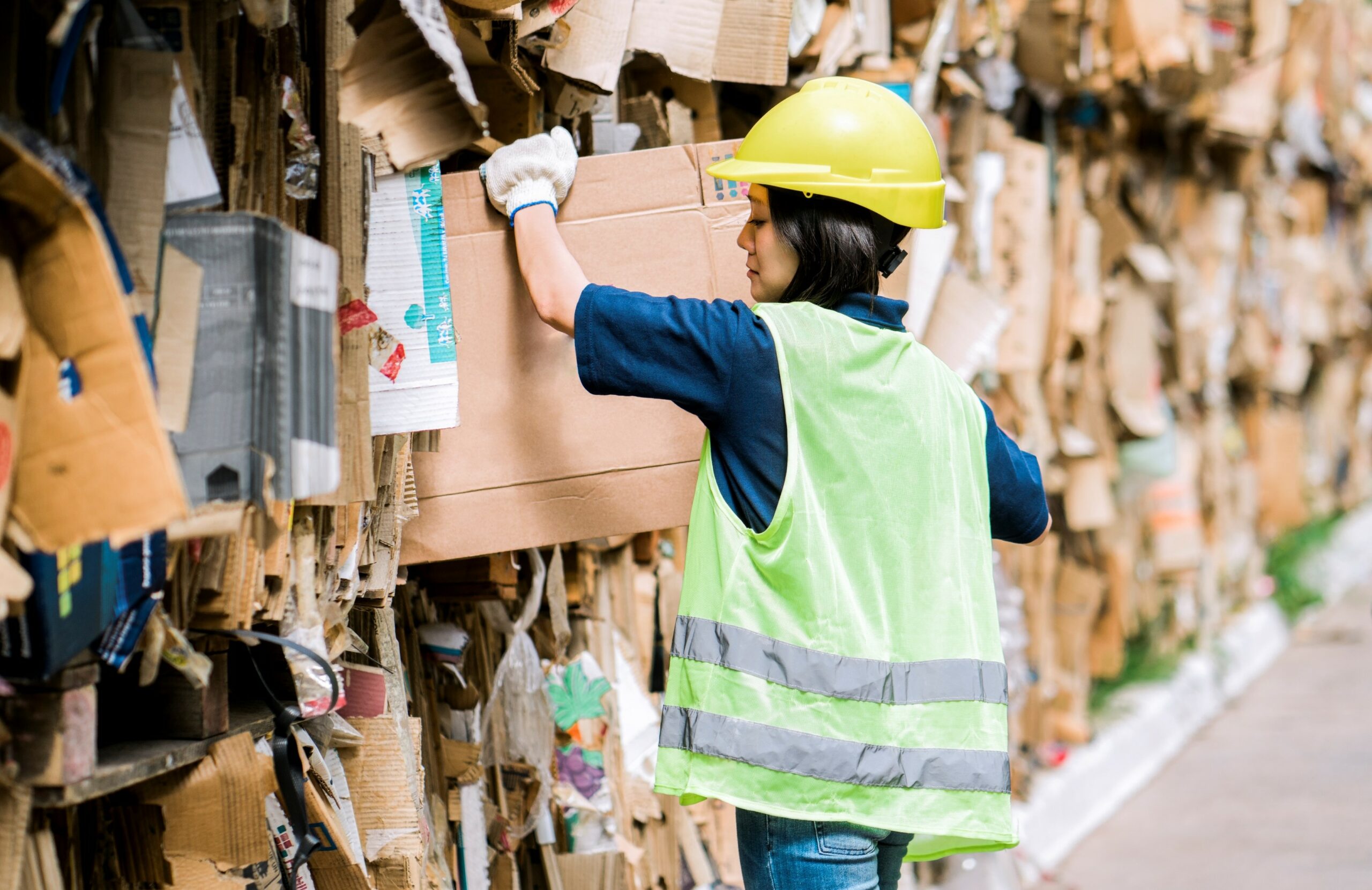How switching to recycled content packaging supports your sustainability goals

Did you know that switching to recycled content packaging can support your sustainability goals? Let’s investigate…
Sustainability is a big business priority. Around the world, the majority of businesses report adopting environmental sustainability practices. This comes as no surprise! With mounting pressure from global governments and consumers to tackle climate change, businesses are doing the responsible thing.
And when it comes to packaging – sustainability and concern for the environment is no different. In fact, sustainability is now a major driver for the businesses when they choose their packaging materials. For example, over 95% of retailers and 3PLs reported in our recent survey that sustainability is important to them when it comes to packaging.
So, making an informed choice about packaging is important when you want to achieve your sustainability goals. But what should you think about?

The role of packaging and the environment
The main role of packaging is to protect products. Packaging materials help businesses to move goods around the country (or the world!) without breakages. By reducing damage, we are reducing waste. If a damaged product cannot be repaired, it’s typically written off and put through waste streams – often incineration or landfill. As we now know, this isn’t great for the planet!
The caveat to providing great protection is that we are do it in the most sustainable way possible. To do this, you need to design, use, and dispose of packaging materials properly. I.e., using the minimum of materials to provide the maximum protection that a product requires to safely complete its journey.
Often, many people jump to how easy packaging is to recycle, which is a great place to start. We also recommend considering recycled content packaging…
Switching to recycled content packaging can play a considerable role in reducing the carbon footprint of your supply chain, and in turn support your sustainability goals! Here we’ll explore what recycled content packaging is and the key benefits of making the switch to recycled content packaging.

What is recycled content packaging?
When we talk about recycled content materials, these can be by-products from initial manufacturing processes or post-consumer waste. This includes products you have popped in your at-home recycling.

How does using recycled content packaging benefit environment and support your sustainability goals?
Using recycled content materials has a positive impact on the environment. It helps us conserve natural resources, generates fewer emissions, diverts waste from landfill and helps us work towards a circular economy.

1. Recycled content packaging materials help conserve natural resources and helps cut emissions during material manufacturing
Sustainability is about conserving an ecological balance, avoiding the depletion of natural resources. By using purely virgin materials in packaging we are instigating a full chain of processes to get to the point packaging materials are manufactured. This starts with sourcing raw materials…
For example, traditional plastics rely on the extraction of oil to kick start the process. 100% Kraft paper products relay on a regular supply of managed forests to feed production. If we use recycled content material instead, this helps us preserve natural resources for future generations.
On top of preserving raw materials, manufacturing recycled content packaging is actually less taxing in terms of CO2 emissions.
They show that virgin paper processing CO2e is 100kg per tonne higher than recycled material processing from a closed loop source. The savings are considerably higher when looking at plastic manufacturing, with a reduction of 790kg of CO2e per tonne of material for closed loop recycling. Whilst in an open loop process could using recycled material could reduce CO2e by 2500kg per tonne.
By switching to a recycled content packaging product, you’re not only conserving natural resources, but helping to reduce the carbon footprint of the manufacturing process too. A big win for the environment AND your sustainability goals.

2. Using recycled content packaging can help divert waste from landfill
If the waste we produce is recycled, it diverts it from landfill. This helps reduce greenhouse gas production and minimises land and water pollution. It also helps prevent marine littering – 80% of which originates on land according to UNEP.
Plus, for UK businesses, it can be more costly to send waste to landfill due to Landfill Tax, which is applied at almost £100 per tonne.
So, environmentally and financially it makes sense to support the growth and adoption of recycled content packaging materials in the UK.
But while paper recycling is a long-established industry in the UK, recycling plastics can be more challenging. There are a couple of reasons for this, which are worth highlighting here…
The first is commercial viability. The use of plastic has caught on for a reason – it’s very lightweight. So, one of its strongest selling points is also its weakest recycling point. You have to collect a lot of empty plastic bottles or film to get one tonne of material for processing.
Secondly, it’s about the recycling infrastructure in the UK. We have approximately 350 councils working in England alone to collect and process our waste. This means that what can be recycled in one region, may not be recycled in another. There is a plan in place to standardise this but it’s not something that will happen quickly. The Waste Management Plan for England, published in January 2021, outlines major waste reforms to support the achievement of a 65% recycling target for municipal waste by 2035.
Incidentally, waste management is a devolved government issue in the UK. So, Wales and Scotland are performing better than England, as they have a more consistent approach. Whilst this is positive, England does have a higher population and so, unfortunately, has the highest consumption rates.
Then, what is happening to support the adoption of recycled content materials and their collection?
Well, many supermarkets have set up their own collection schemes to help increase the amount of raw film material available to the recycling industry. Plus, the UK Government introduced the UK Plastic Packaging Tax in April 2022. The tax is aimed at driving growth in the market for recycled plastics. It’s working to do this by increasing the cost of virgin plastic packaging products with the addition of a £200 tax per tonne. In turn, this should encourage the manufacturing and use of recycled content plastic packaging. Long-term this will open up a commercially viable market for the recycling industry.

3. Recycled content packaging helps us move towards a circular economy that considers the packaging life cycle
Obviously, there are more considerations for a sustainable approach to packaging than just the material make-up of the pack. The initial design process has to step up and play its part by considering the packaging life cycle. And recycled content plays a role in creating a circular economy when it comes to good packaging design…
The perfect design process should consider:
- The ability to reuse packaging – whether that is in a B2B or B2C scenario, creating a closed loop supply chain or circular economy
- A secondary purpose – so that the item can fulfil another role before being recycled
- Reducing material used – re-engineering the pack to contain less material
- Recyclability – ensuring the item is fully recyclable and contains clear instructions on how to recycle.

Help making an informed choice about recycled content packaging options
If you are considering a switch to recycled content material, Macfarlane Packaging are on hand to help to support you. Our team will help you make an informed choice about the packaging that will protect your products and reduce the CO2 footprint of your supply chain. Contact us today.
